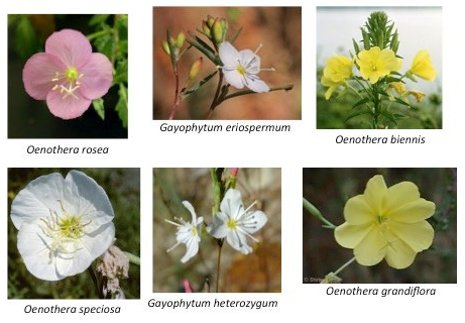Sex: It's a Good Thing, Evolutionarily Speaking
Sure, sex may be fun, but it's a lot of work, and the payoff is by no means certain. Scientists have speculated for a long time on why all living things don't simply make like amoebas and split.

Now a biologist at Michigan Technological University has found one good reason: sexual reproduction strengthens an organism's ability to adapt; specifically, it may lead to stronger disease resistance.
Erika Hersch-Green, an associate professor in the Department of Biological Sciences, tested the idea on 32 different species of evening primroses. These native North American wildflowers are unusual in that a number of species reproduce asexually, essentially through cloning themselves. That allowed Hersch-Green and her colleagues to compare 16 species that reproduce sexually with an equal number that function asexually.
"We found that the sexual plants have an increased ability for adaptive, positive evolution," she said. "That's in line with many of the theories of evolution of sex."
Scientists believe that sexual reproduction offers two big advantages: It can sweep bad mutations out of the gene pool more quickly. Also, by shuffling parents' genetic material each generation, it increases the likelihood that new genetic combinations will arise that help organisms adapt to their environment.
To find evidence of those good genetic recombinations, Hersch-Green and her team sequenced the gene chitinase (pronounced KIE-tin-ace) A in each of the 32 species. All plants have the gene, which makes the enzyme chitinase and helps them identify and fight off diseases such as powdery mildew. However, the genes are not exactly the same; there are some differences in their building blocks, called nucleotides, which means that there are slight variations in chitinase from species to species.
| About the Researcher |
|---|

Erika Hersch-Greeneherschg@mtu.edu |
Current Research Interests |
|
Once they knew the sequence of nucleotides in the gene for each species, the researchers compared them using well-established mathematical models. They found that the chitinase A genes in the evening primrose species that reproduce sexually were different in four places from the ancestral gene, while the genes in the asexual species had not changed. In addition, the genes in the sexual plants had a higher expression level, meaning they produced more of the chitinase enzyme used to fight off disease.
She also looked at how well 12 different genotypes of the same asexual evening primrose species weathered attacks by powdery mildew. Those that sustained the most damage from the mildew also were less fit, meaning they produced fewer fruits. "This suggests that common pathogens of evening primrose plants are an important selective agent for these plants," Hersch-Green said. "Furthermore, molecular changes that increase chitinase expression and reduce disease damage are likely to be very good for the plants."
"This is in line with the theory that sex provides an evolutionary advantage to organisms," Hersch-Green said. "Until now, there had been no empirical evidence to support this advantage of new genetic combinations."
The findings are published in the article "Adaptive Molecular Evolution of a Defence Gene in Sexual but not Functionally Asexual Evening Primroses," published May 15 online in the Journal of Evolutionary Biology. Coauthors on the study are H. Myburg of North Carolina State University and M. T. J. Johnson of the University of Toronto at Mississauga.
Michigan Technological University is an R1 public research university founded in 1885 in Houghton, and is home to nearly 7,500 students from more than 60 countries around the world. Consistently ranked among the best universities in the country for return on investment, Michigan's flagship technological university offers more than 185 undergraduate and graduate degree programs in science and technology, engineering, computing, forestry, business, health professions, humanities, mathematics, social sciences, and the arts. The rural campus is situated just miles from Lake Superior in Michigan's Upper Peninsula, offering year-round opportunities for outdoor adventure.




Comments